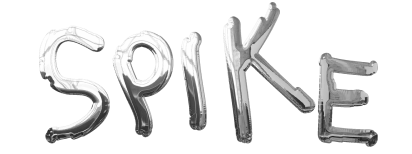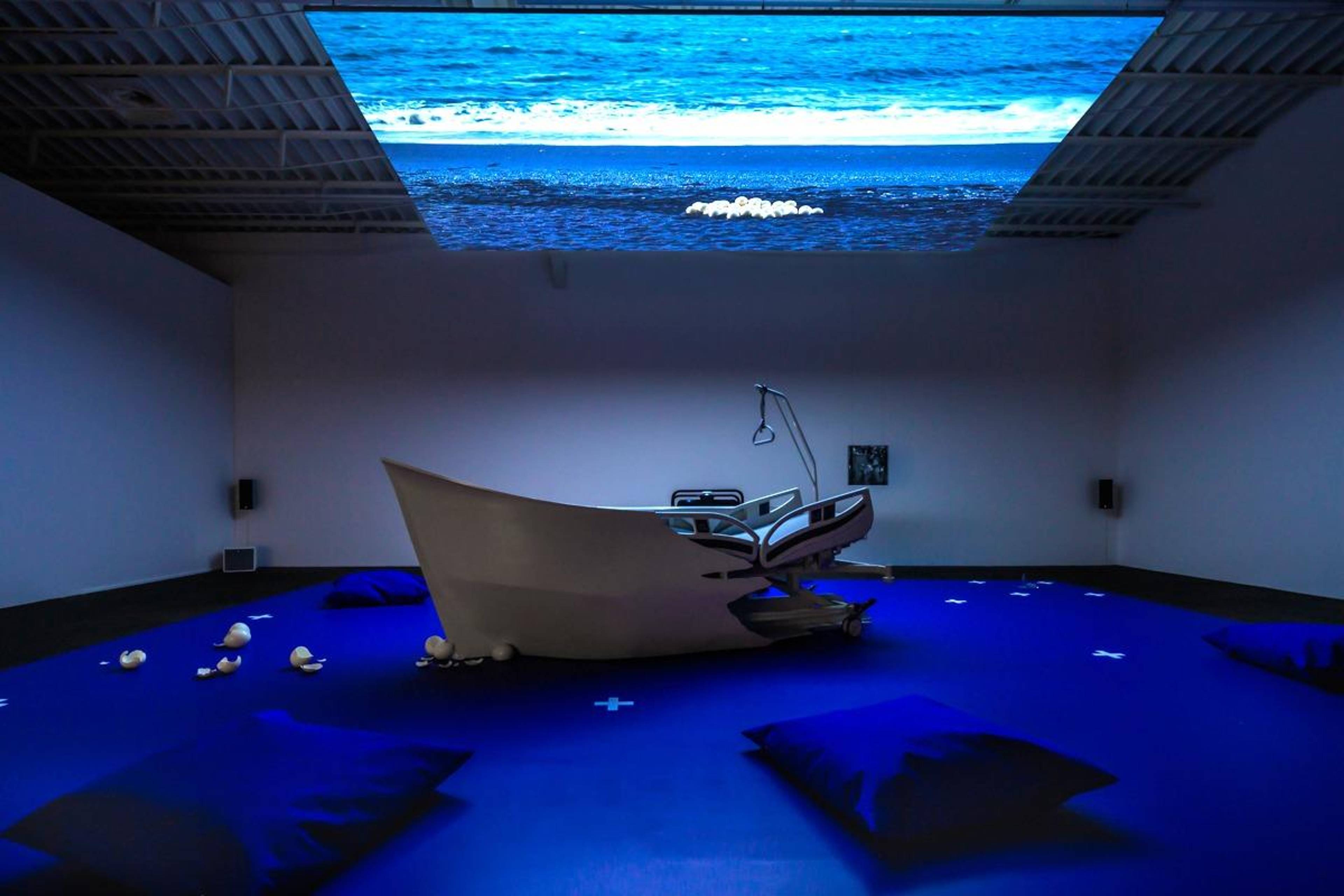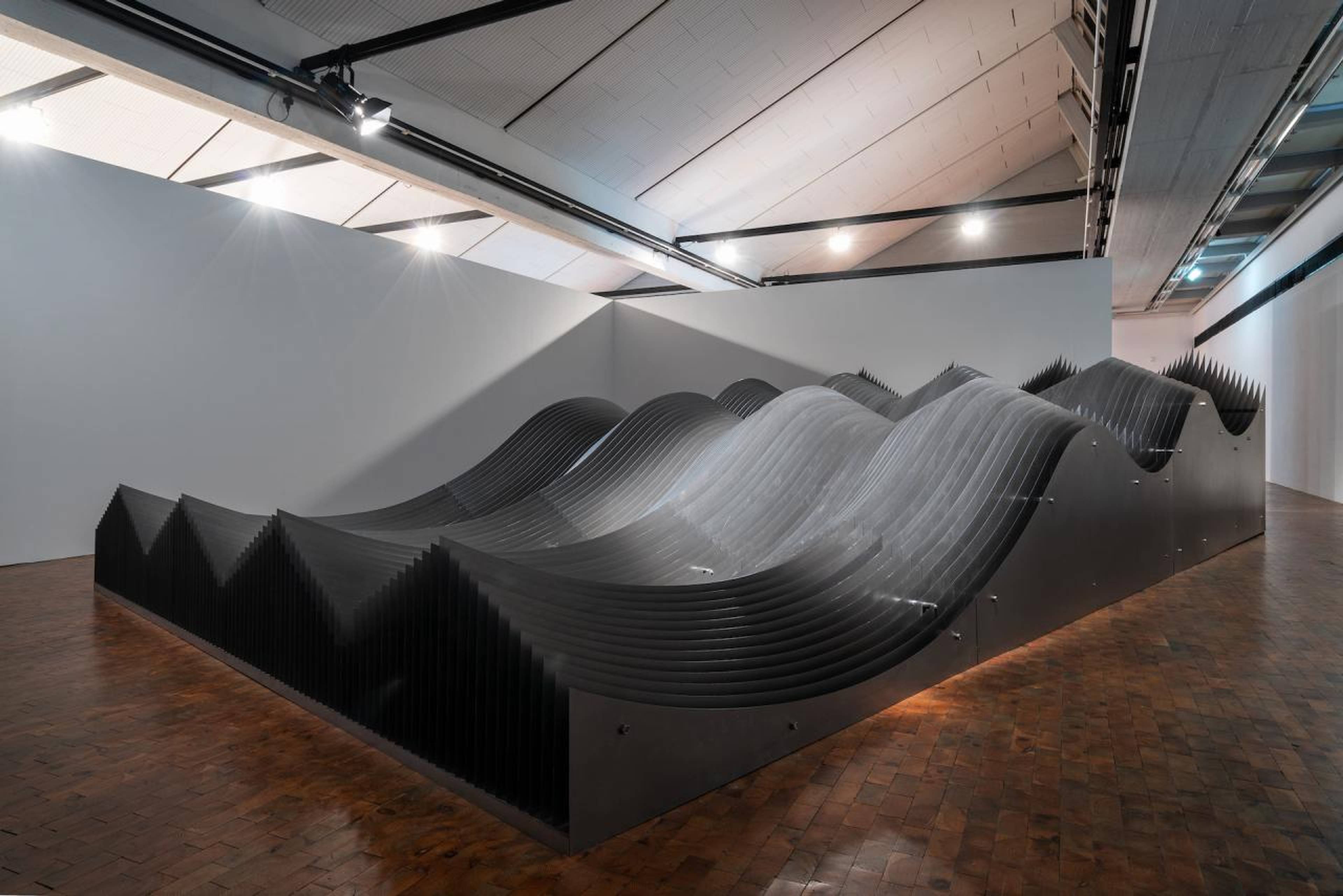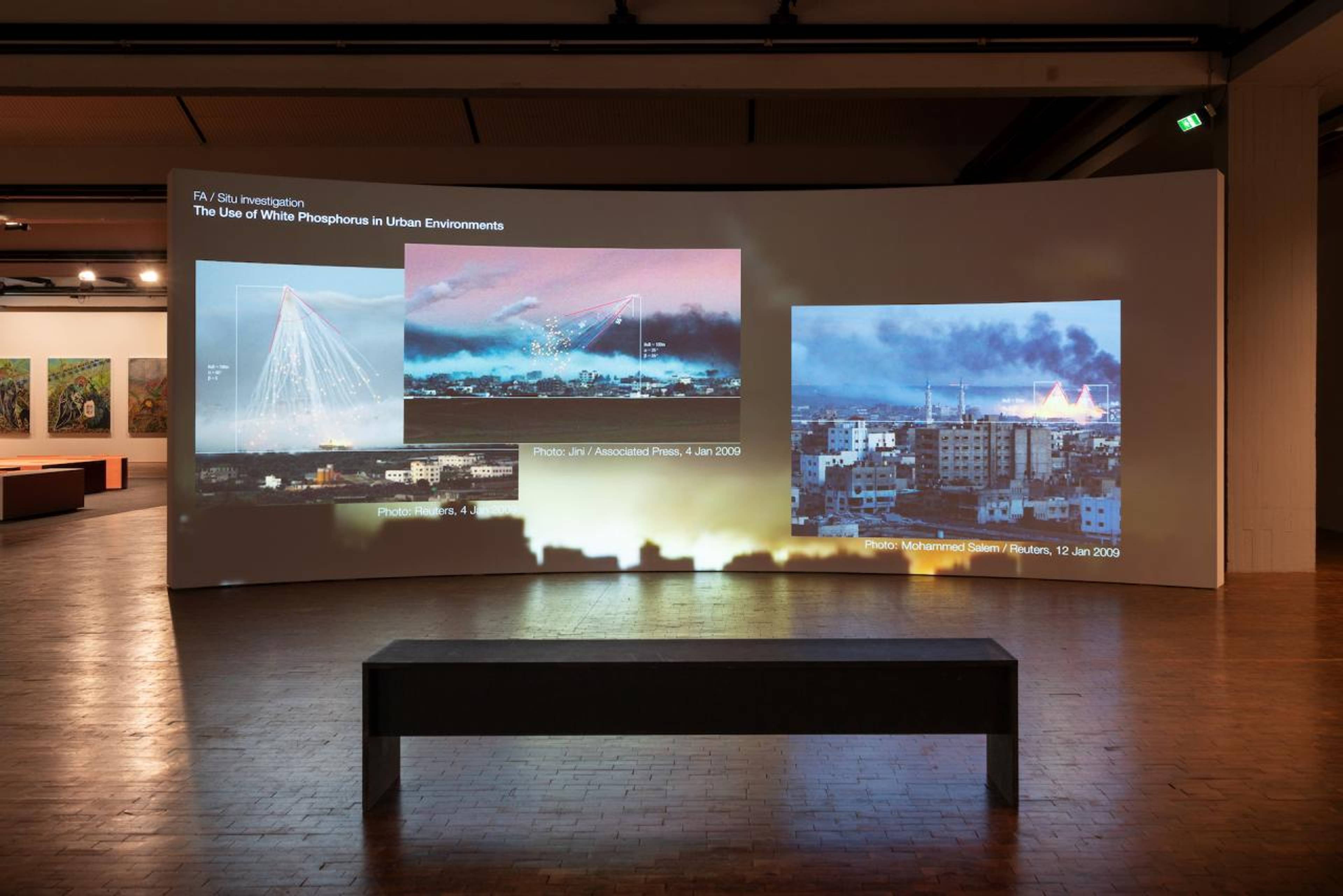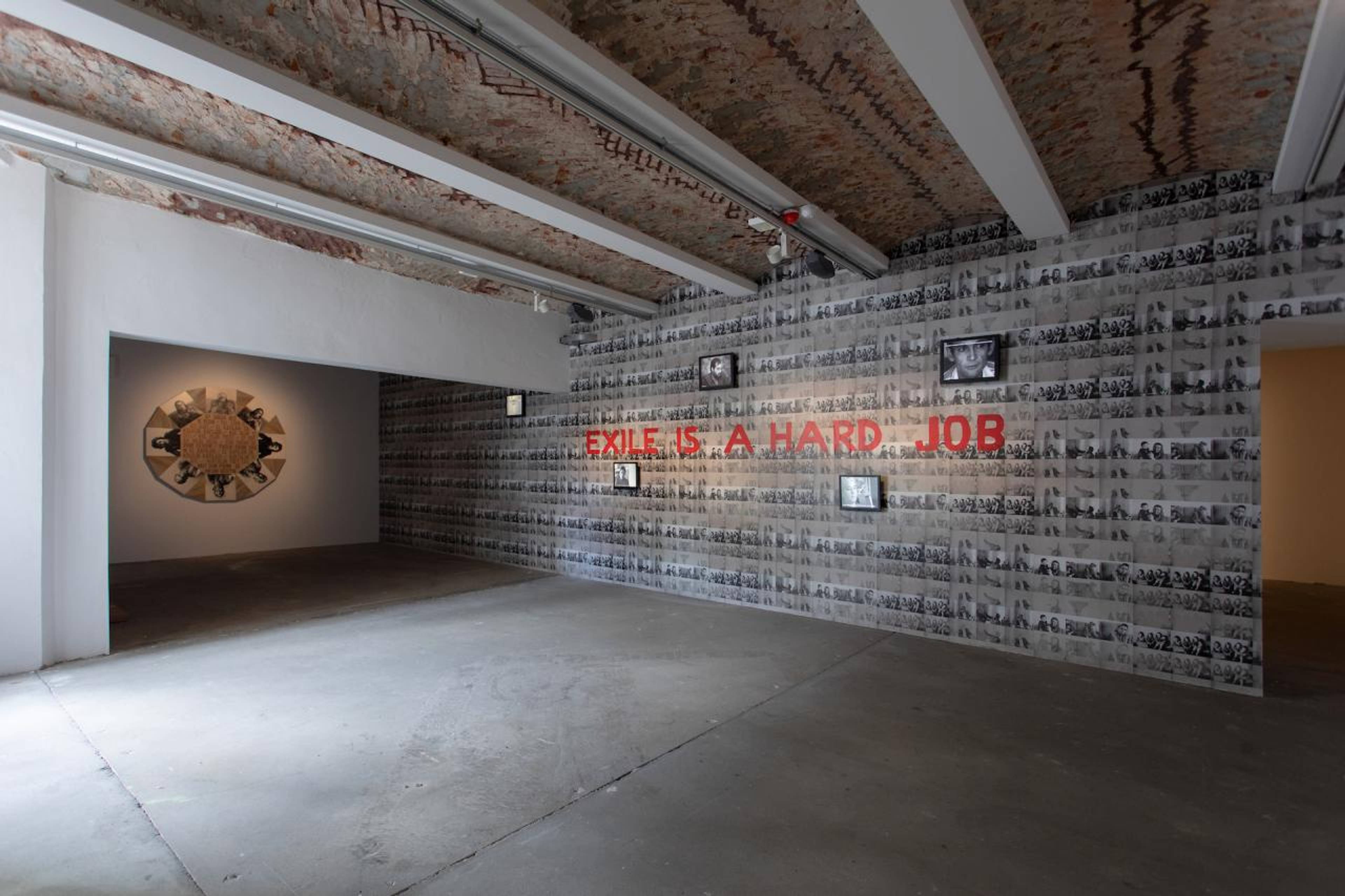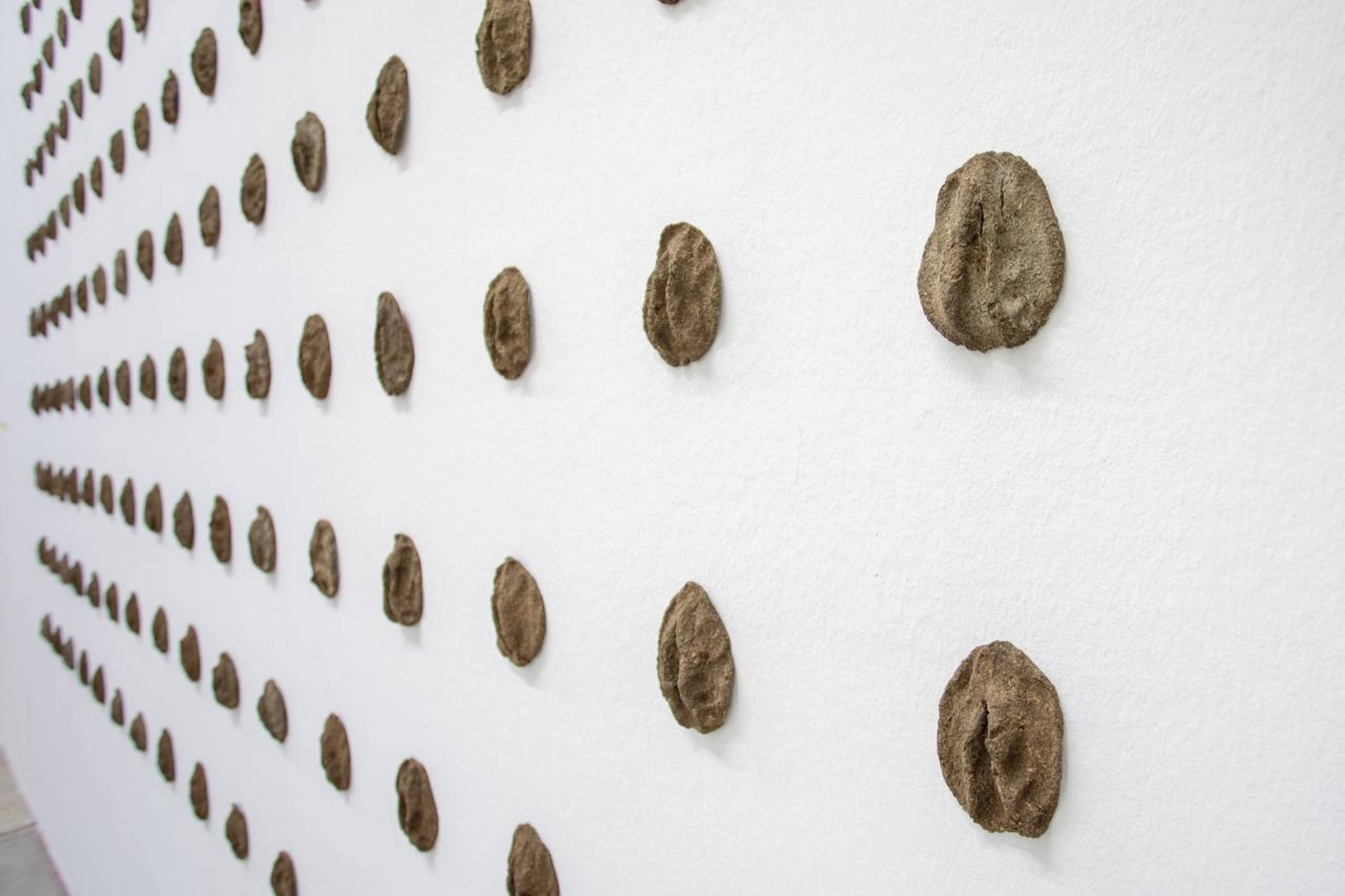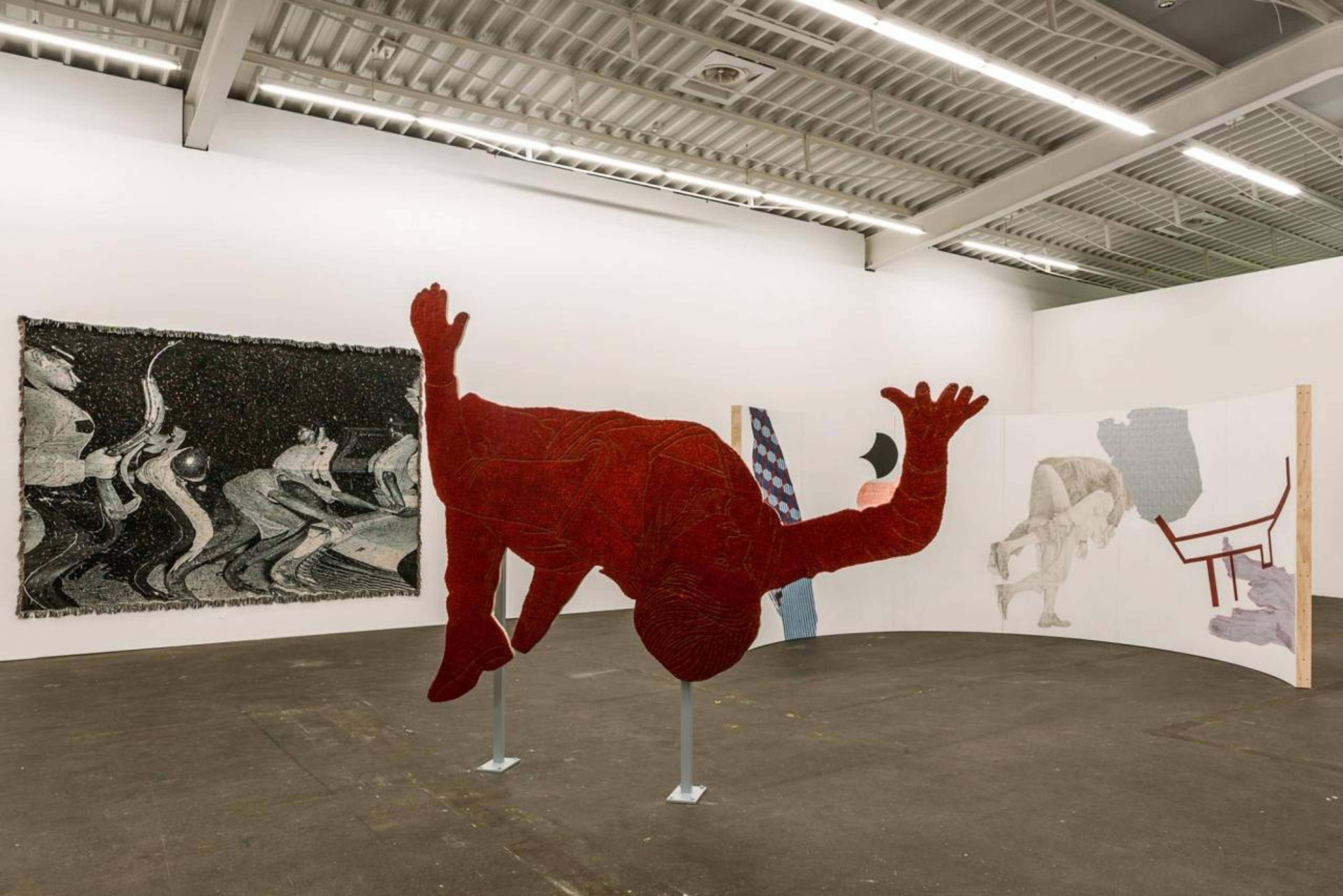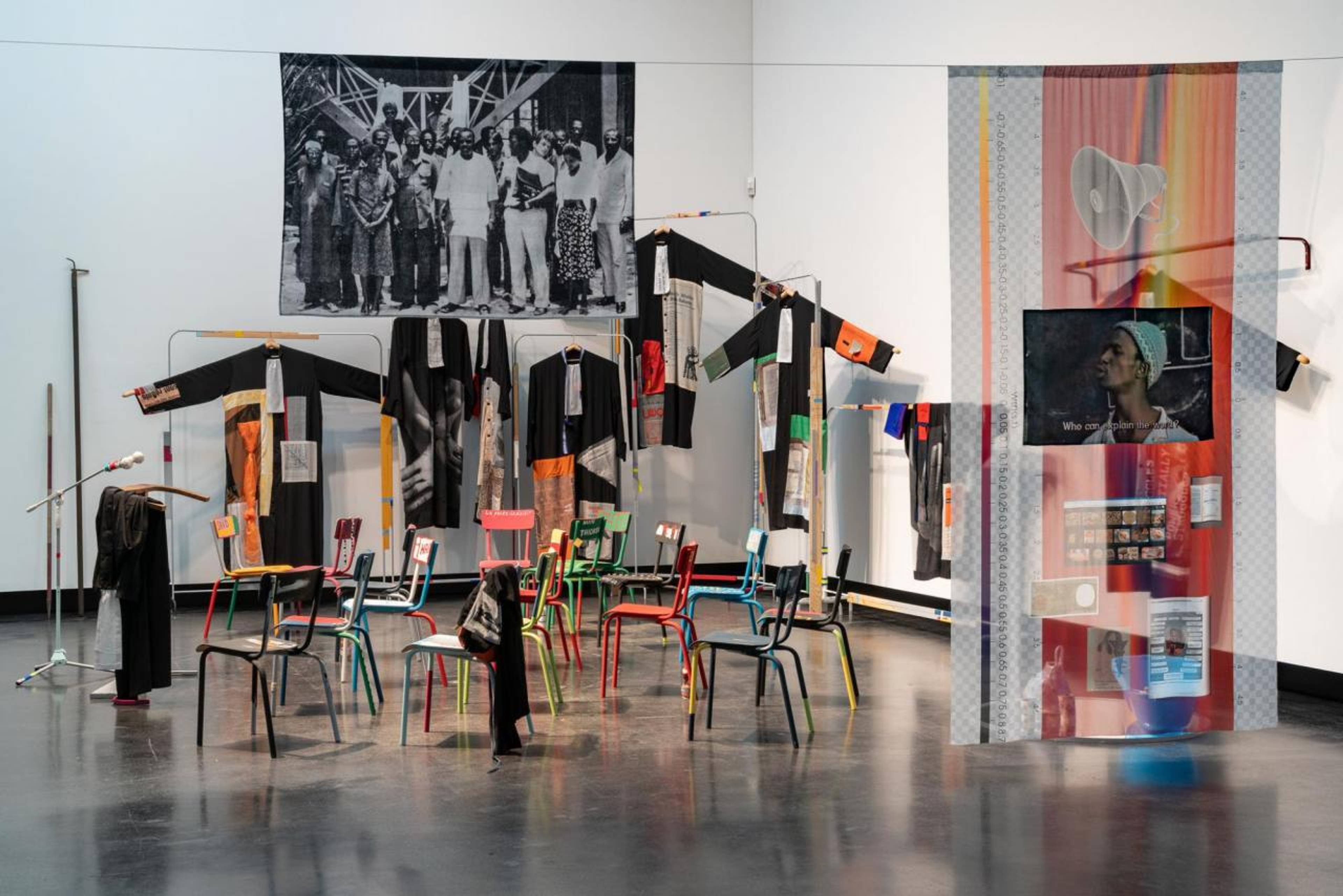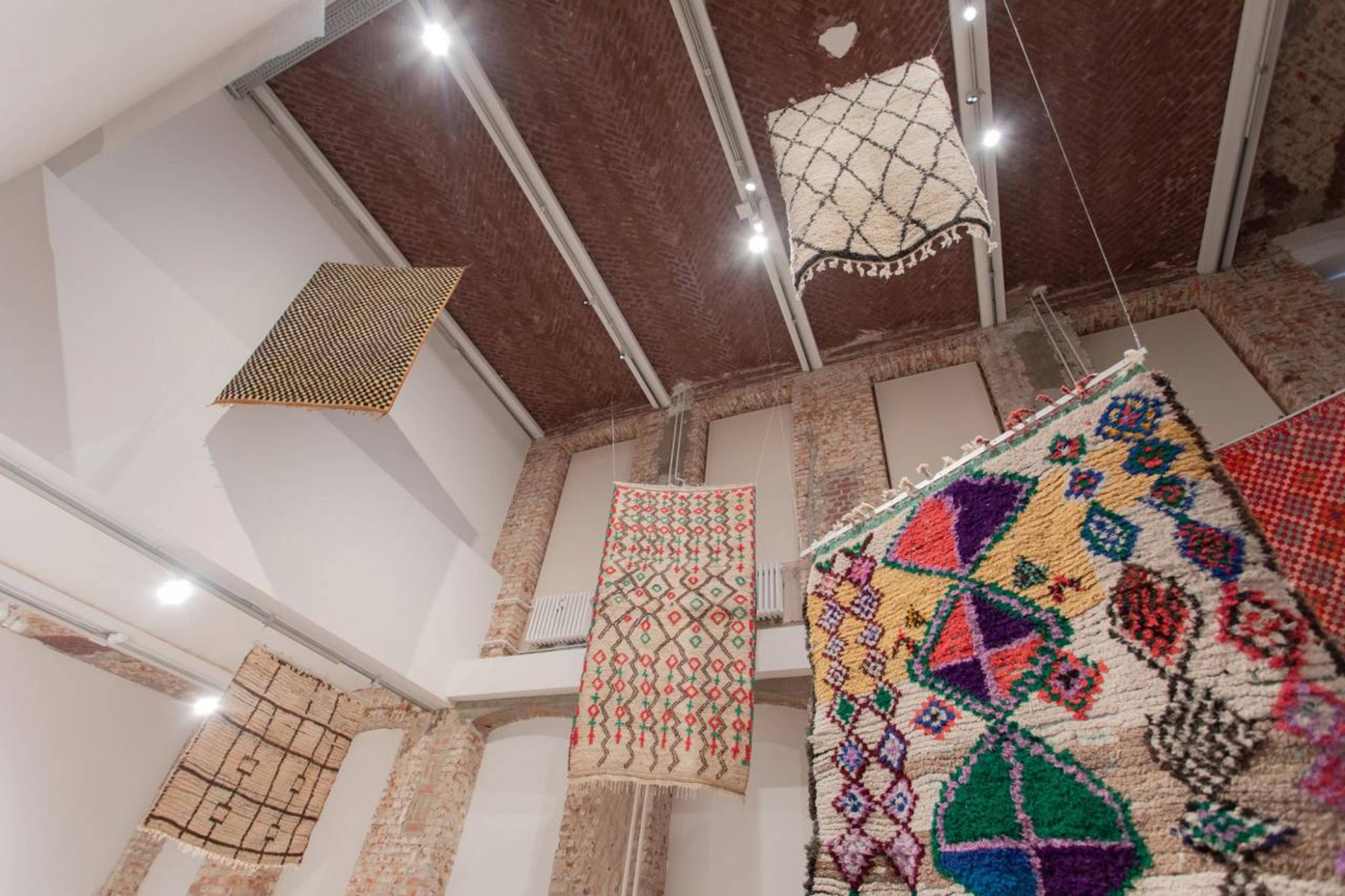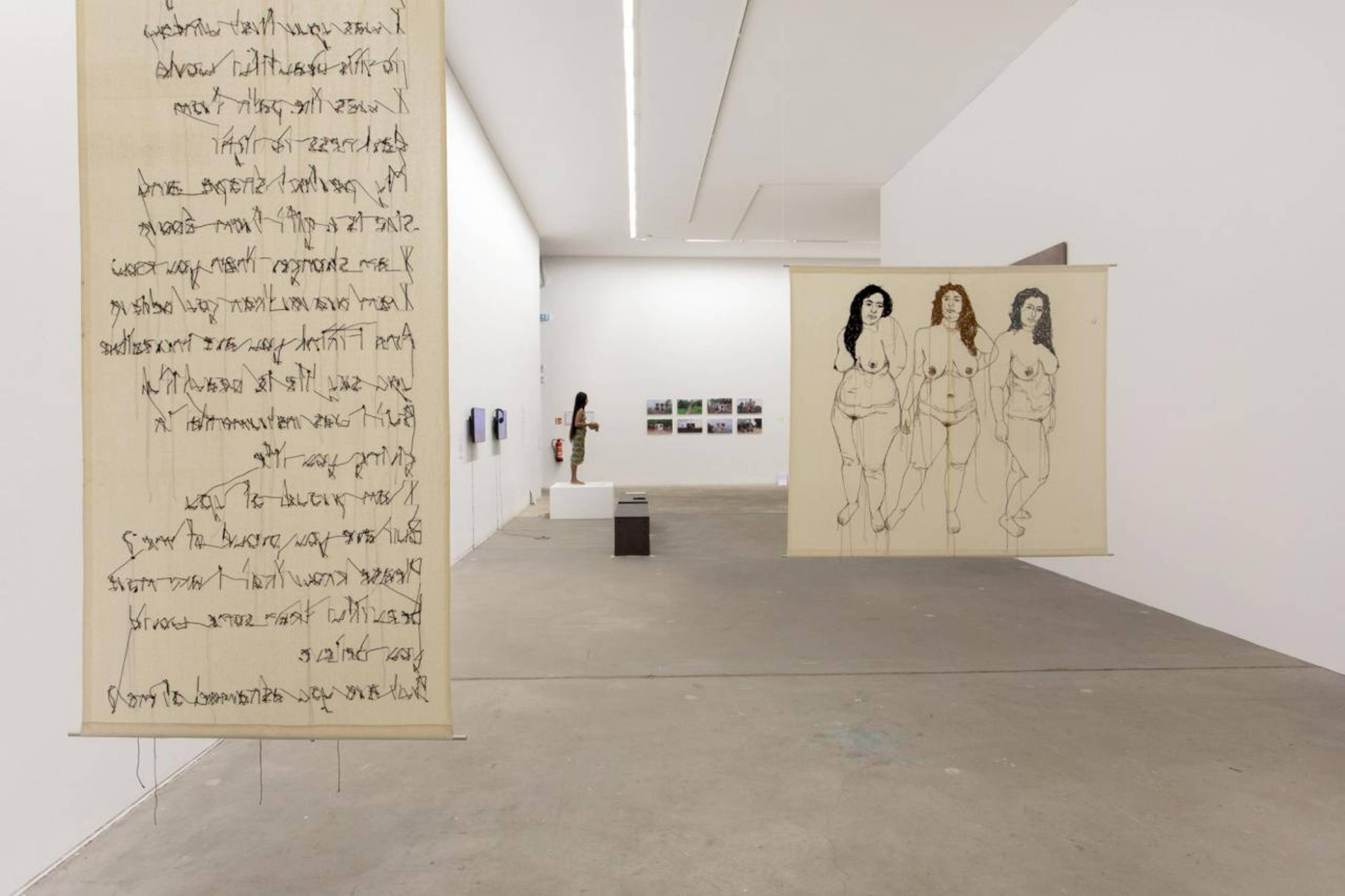There is a pile of steel plates on view at the 12th Berlin Biennale. Curved in a way that make them look like a wavy sea, they’re not undisciplined like some great waves off Kanagawa, they’re more like the engineered ones at water parks. It is the South China Sea overlooking Vietnam, “the object of violent disputes between bordering countries,” the artwork’s caption tells us. The sharp edges are sharp because “they suggest danger and violence,” and the iron sheets are iron because they “refer to early industrialization, with its machine tools, transportation systems, and weaponization,” we keep on reading. “It’s not very nice!” Mark Fisher wrote once, “Capital behaves like capital, repressive state apparatuses are repressive. We must protest!”And he was joking, although I probably shouldn’t specify.
Đào Châu Hải, Ballad of the East Sea , 2022, CNC cut steel plates. Installation view, 12th Berlin Biennale, Hamburger Bahnhof, 2022, Berlin. Photo: dotgain.info
Also on view at the 12th Berlin Biennale is a diagram on a wall several meters long that charts the last five years of French political activism on Twitter. Above the diagram are more maps, texts, and lists, both static and scrolling on screens — all in the primary colors blue and red and their offspring violet, all with words written in sans-serif. The room seems like a quantitative epistemology class. And in fact it is, as the person who made it isn’t an artist but a researcher at the French National Centre for Scientific Research CNRS in Paris who, in a moment of geek euphoria or meta-irony writes in an overlay “(yes, it’s graph theory!)”
This sea and this lesson mark the two major poles of the 12th Berlin Biennale artistic geography: a literal mimesis of socio-political phenomena turned into one-dimensional artistic matter or info-metrics that are not artistically processed. There are modulations within these two confines, of course. Some are vibrant works by non-Western — mainly North-African and Arab — artists uninterested in (excluded from?) international contemporary art grammar, like Mayuri Chari’s vaginas made of cow dung, which hint at India’s patriarchal mastery over female bodies by employing a material used there both as fuel and in religious purification rituals. But there are too many bad pieces overall that just seem like agitprop paraphernalia — stitched banners, xeroxed documents, slogan decals, and other forms of screaming. Two exceptions stick out. Forensic Architecture’s Cloud Studies (2022) is a video that inspects the toxicity and colonization of the sky by state and corporate powers in such a sanitized yet rhizomatic way that it manages to honor the semiotic and existential complexity of the “thin air” we breath.
Forensic Architecture, Cloud Studies , 2022, two channel video installation, color, sound, 26:08. Installation view, 12th Berlin Biennale, Hamburger Bahnhof, 2022, Berlin. Photo: dotgain.info
And then there’s Thuy-Han Nguyen-Chi’s This undreamt of sail is watered by the white wind of the abyss (2022), which invite viewers to lay down on a sort of giant mattress near broken ostrich eggs, oxygen masks, and a sculpture somewhere between a hospital bed and a boat, to watch a video mounted on the ceiling. Co-directed with the artist’s mother, it follows a woman’s odyssey across the ocean on a boat from Vietnam to Thailand and then to Germany after the Vietnam War, and it’s not exactly clear if it’s a documentary, fantasy, or mythology. What makes this latter work a good exception is its ability to animate the signifier and signified in a way that make us truly experience a “third space” — in this case, of horror, motherhood, emergency, and new beginnings. Instead of pedantically explaining the importance of a struggle, or of empathy, the work produces it, generatively, in the viewer. Works of art have a double character, Ursula Brandstätter tells us. A specific material presence of some sort, a reality in itself, and the power of referencing realities outside of it — at once, they are thing and sign. The 12th Berlin Biennale mostly champions works that seem to mutilate both, consecrated to a pedagogic, politically engaged outside, stuck in a material presence that doesn’t manage to keep us there, nor dream elsewhere.
Nil Yalter, Exile Is A Hard Job , 1983/2022. Installation view, 12th Berlin Biennale, Hamburger Bahnhof, 2022, Berlin. Photo: Silke Briel
Earlier this year, the prophecy said how the vibe would shift from over-driven moralism to pursuit of pleasure, and in the US critics like Sean Tatol say it’s already cliché to see identity politics as a smokescreen to distract from real issues of class — after all, Fisher’s “Exiting the Vampire Castle” was written almost ten years ago. But the moral content dominating artistic sensibilities doesn’t seem like it’s over just yet in mainstream art, biennales, and mega-exhibitions — and fun is only lumbung in Kassel these days. In the 2018 “Great Awokening” piece that now serves as a milestone, Molly Fischer questioned Jay-Z’s “Moonlight” music video restaging scenes from Friends with black actors: “Do we get to imagine ourselves subversive for making (or watching) a by-the-numbers sitcom that replaces white people with black ones?” Let’s swap sitcom with exhibition . Exclusion (marginality and otherness) is what left political thought is more generally embracing too, moving very far from the traditional concern that exploitation (class) was — some call the rebellion “conformist.” Did we forget how to dream, and fight, our way out of the vampire castle? Of course, the struggle for recognition is, and should be, at the center of social conflicts, and we truly do need to make space for non rich-kid art, or be brave enough to confront art’s nullity, but is there no other way to do this?
Two weeks after the biennale’s opening, Pope.L spoke on Schinkel Pavillon’s terrace with curator Dieter Roelstraete on the occasion of the artist’s solo show at the Berlin institution. They mumbled and muddled about very unimportant, very human details like the artist’s jet lag, or how fashionable the audience was, with such humor, grace, and affability that generated a sense of communality, and smiles, so rare at art panels. The same effortless spirit was in the artist’s scattered, sharp remarks on the structural uncertainty with which to read and process power (obsessively calling himself “stupid” or someone who simply “doesn’t know”), with which to read and process facts and meanings (his show is titled Between a Figure and a Letter ), or identity (“if you want to be trans, don’t be trans”) while sharing personal miseries of racist discrimination at restaurants. This talk and his equally refreshing exhibition deal with the same concerns of the Berlin Biennale — decolonialism, structural violence, and repair — just outside of the castle.
Since the one curated by DIS in 2016, I look at the Berlin Biennale as the place where curatorial trends may go to die. This time, the expiry bell will, I hope, toll very loud from the tower.
12th Berlin Biennale
June 11 – September 18, 2022
Various venues, Berlin
Mayuri Chari, I Was Not Created for Pleasure , 2017/22, cow dung, sawdust, fenugreek powder, wood guard, linseed oil. Installation view, 12th Berlin Biennale, Hamburger Bahnhof, 2022, Berlin. Photo: Silke Briel
View of “12th Berlin Biennale,” Hamburger Bahnhof, 2022, Berlin. Photo: Laura Fiorio
David Chavalarias, Shifting Collectives , 2022. Installation view, 12th Berlin Biennale, Hamburger Bahnhof, 2022, Berlin © David Chavalarias
The School of Mutants, All Fragments of the Word Will Come Back Here to Mend Each Other , 2022, mixed media. Installation view, “12th Berlin Biennale,” Akademie der Künste, Pariser Platz, 2022, Berlin. Photo: dotgain.info
Myriam El Haïk, Please Patterns , 2022, installation and performance for drawings, rugs, and piano. Installation view, “12th Berlin Biennale,” KW Institute for Contemporary Art, 2022, Berlin. Photo: Silke Briel
Mayuri Chari, Deneth Piumakshi Veda Arachchige. Installation view, “12th Berlin Biennale,” KW Institute for Contemporary Art, 2022, Berlin. Photo: Silke Briel
